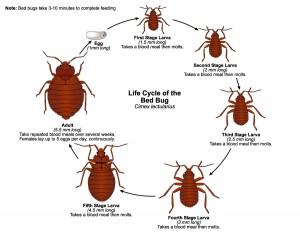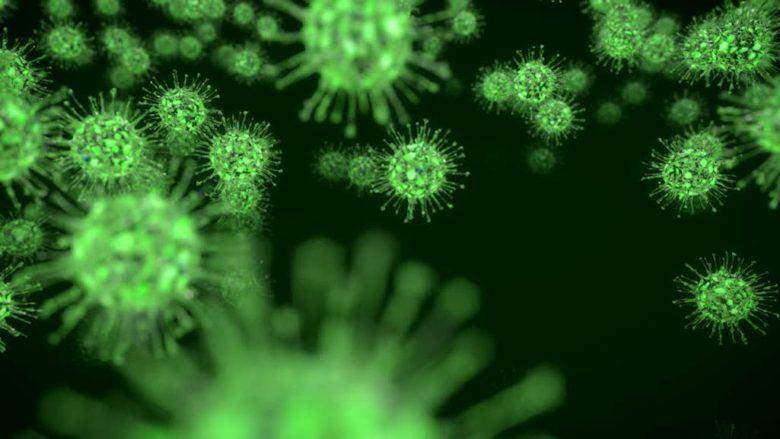 Bed bugs are a horrifying sight to any renter or home or business owner. Contrary to the myths, they don’t spread disease, but have an incredible hiding ability and can proliferate very quickly. On average, they live for 10 months but can live for a year or more in the right conditions. From egg to adult, one “grows up” in 37 days and is ready to reproduce again.
Bed bugs are a horrifying sight to any renter or home or business owner. Contrary to the myths, they don’t spread disease, but have an incredible hiding ability and can proliferate very quickly. On average, they live for 10 months but can live for a year or more in the right conditions. From egg to adult, one “grows up” in 37 days and is ready to reproduce again.
Maturation
To mate, bed bugs must have a blood meal first. An adult male latches onto a female and copulates by traumatic insemination. Inserting a reproductive organ called a paramere into the female’s abdominal wall. Females often seek to avoid this activity again, but in the effort can start new colonies. In the meantime, they are repeatedly subject to this abuse.
Sperm are injected into the Organ of Berlese, and from there migrate to the ovaries. Once they’re fertilized, eggs can be laid by the female, which produces as many as seven per day following a blood meal. She can continue this rate for 10 days before having to feed again. Eggs are pearl-white and about the size of a pinhead.
Young bed bugs, or nymphs, go through five stages after they hatch. At room temperature most eggs hatch in about six days but it may take as long as nine. Lower temperatures increase the time until hatching. Nymphs are not as mobile as adults and need to be close to a host. They could be hiding right under you in the seams of a mattress.
Human blood is needed to get to the next stage. After feeding once, it takes under five days to molt and develop into the next stage of life. Bed bug survival is good under favorable conditions. A Virginia Tech report on bed bug biology said over 80% of eggs can survive and yield fully grown, reproductive adults.
Life Stages
The bed bug life cycle consists of several different stages. Eggs are about one millimeter in size, while a first stage nymph measures about 1.5 millimeters. With regular feeding, the insect can develop into each stage in a few days. At the second stage, they are about two millimeters, and 2.5 millimeters at the third stage. Fourth stage nymphs are around three millimeters, molting and growing to about 4.5 millimeters at the fifth and final stage prior to being an adult.
An EPA guide on bed bug appearance illustrates what individuals at each stage look like. Younger bed bugs can be whitish-yellow or completely translucent. If they haven’t fed, these bugs can be just about invisible.
Feeding
Feeding from a host is absolutely necessary for bed bugs to grow and survive. They can go weeks or months without feeding. The lower the ambient temperatures, the more time they can spend without feeding, but studies have shown most starved bed bugs will die of dehydration within 70 days.
To feed, a bed bug must find a host, which usually requires leaving its hiding location. A single feeding takes five to ten minutes. Afterwards, it returns to a safe location where the colony aggregates. Digestion begins and meals are soon excreted, until the insect feeds again in another three to seven days. Most of the time is spent congregating and digesting. Actually, the vast majority of the colony is not feeding at any given time, which is another reason bed bug infestations are hard to detect in the beginning.
Life Expectancy
Only life spans in the laboratory are definitively known. It’s thought bed bugs
can live about a year, but there are many factors in an apartment that can impact longevity. Temperature fluctuations and availability of food sources are just a couple of factors. Insecticides, in bugs not resistant to them, are too. Accidental, or sometimes intentional, crushing, can shorten the life of many a bed bug in a human dwelling.
In a typical setting, bed bugs don’t have the low temperatures needed to prolong their stamina between meals. At room temperature, a starved bed bug will expire due to dehydration in just over a couple of months. Bed bugs seem to be a common threat to humans, but it is actually quite a hard life for most of them.
If you really want to get rid of bed bugs today try SayByeBugs! It was developed as a safe and highly effective alternative among a sea of products that rarely deliver on their promises.









3 Comments